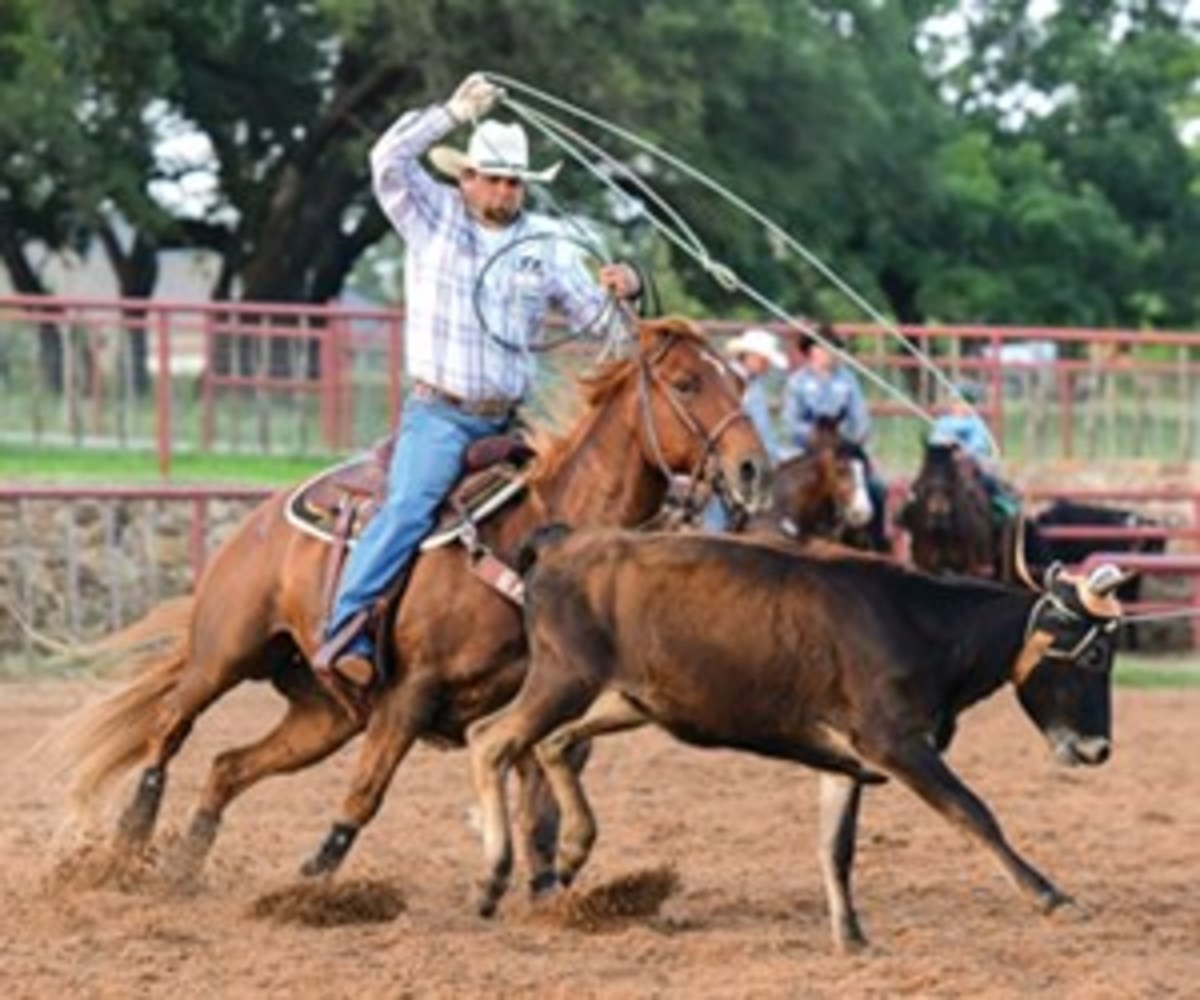One of the most important parts of heeling is understanding what you’re looking at and what you’re throwing at. The sooner you can understand where your target is, the sooner you can locate it and the sooner you get where you need to be and where you need to deliver your loop.
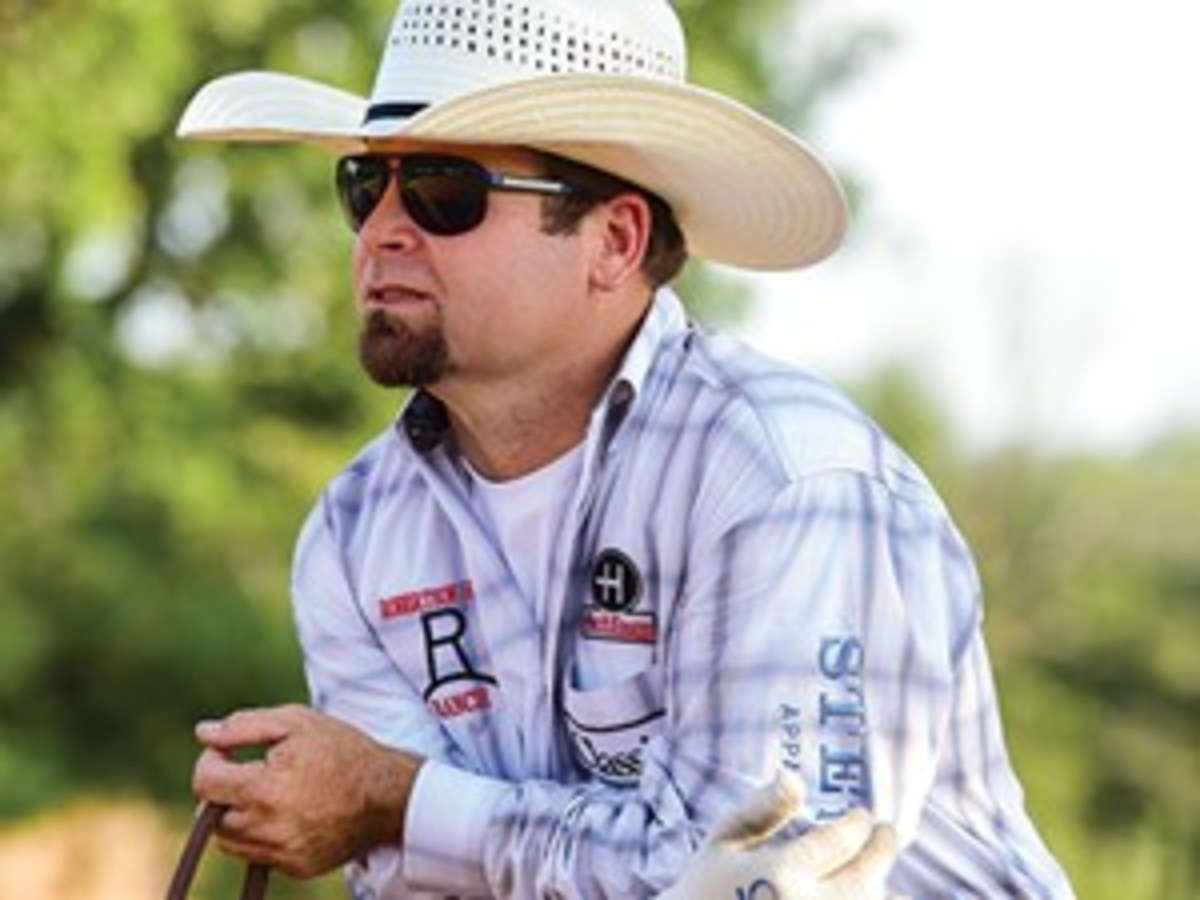
Growing up, you see all kinds of heeling styles. With team roping times getting faster and cattle getting smaller, I think a lot of what we learned growing up is changing. I was told to place my top strand on the right hock, my bottom strand on the ground and follow through past the left foot in my delivery. What I’ve found is that’s an awful lot for me to think about during my delivery. I grew up playing baseball. I never had anyone tell me to put the top of the bat on the top of the ball and the bottom of the bat on the bottom of the ball and follow through. I was always told to put the sweet spot of the bat on the sweet spot of the ball and drive it where you want it.
As my roping has progressed, I find that instead of trying to place all these different parts of my loop on different parts of the steer, it’s easier for me to focus on getting the center of my loop—the part between my hand and my tip—on the feet. I want the center of my loop on the feet, so my top strand naturally lies on the steer’s hock and the bottom strand naturally lies on the ground, and the tip follows through on its own.
I try to make my delivery target the left foot. Most of the time, with the size of cattle now, we heel almost every steer as they’re hopping. In the old days, people trapped them more, now we rope them as they’re jumping in the air. I look at that area from their hock to their feet as I deliver to the left toe. Almost every time, I catch the right foot on my way through to the left foot.
1. When I leave the box, I’m bringing my focus to the entire hind end of the steer. Trying to pick up my target that early—for me—causes me to get too zoned in and not read the way the entire run is setting up. I want to get a feel for the run, so if I focus on the steer’s rib cage backward, I can do that and know if the steer is going to step to the right or left. Zoning in too much on one spot can get a roper lost in terms of position.
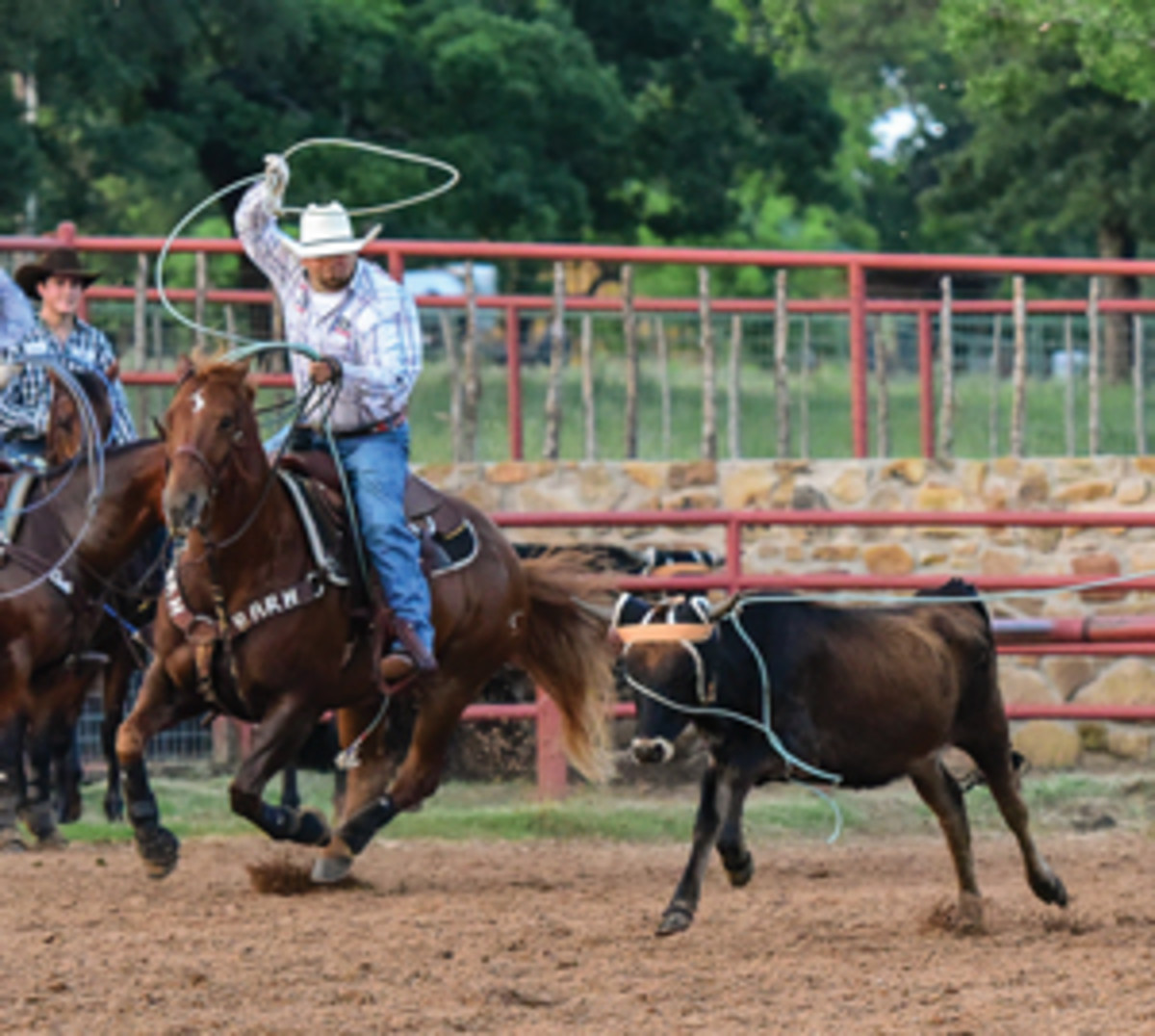
2. As I feel the head rope going on and the steer is starting to shape up and turn, my target moves down the rib cage to strictly the hindquarters of the steer. I’ve got a back-end view of the steer and I’m looking from the hips all the way to the ground and reading where the steer’s hind end is going. I’m transitioning my eyes from the side of the steer to the back of the steer on my way to the delivery target.
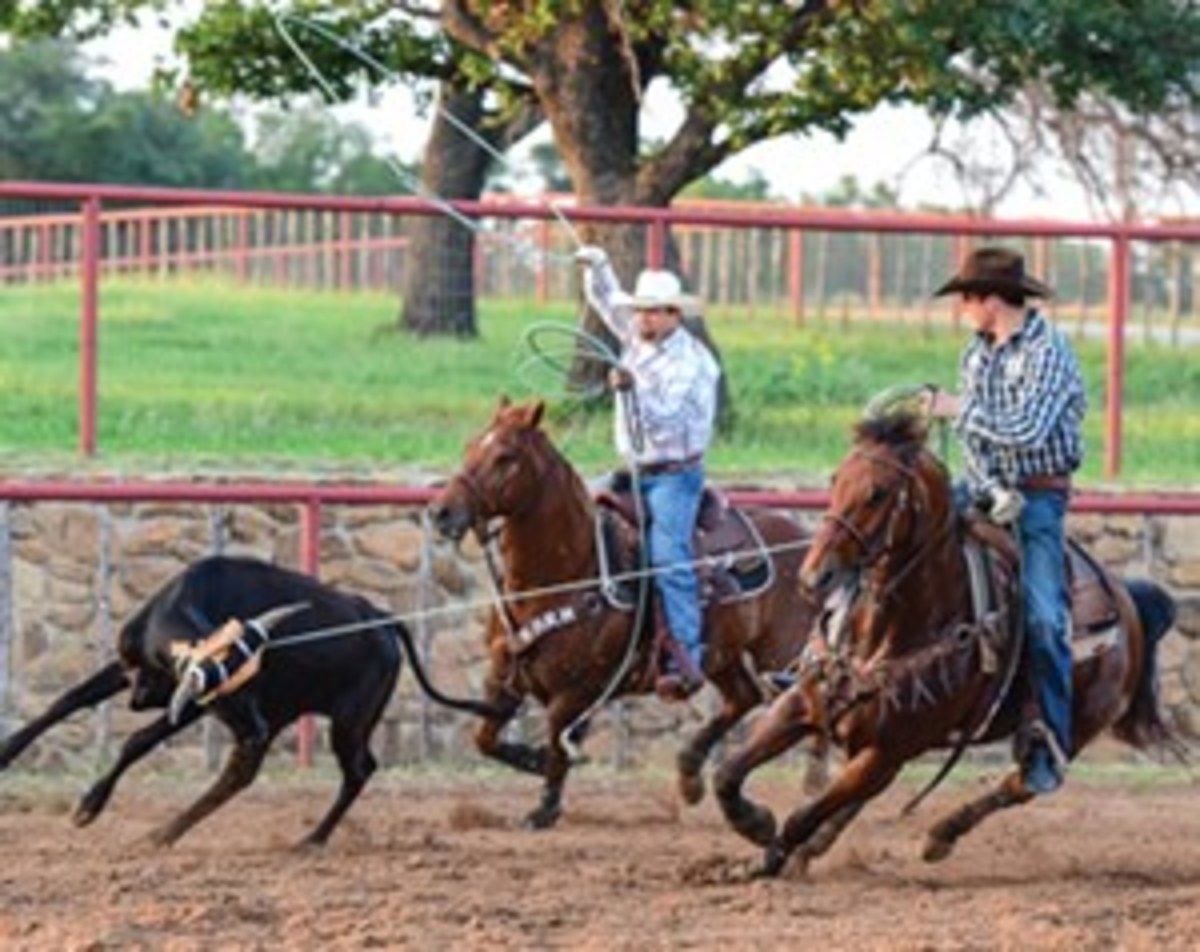
3. As the steer is coming through the switch, I start to look for what I call the strike zone. The hocks are the top of the strike zone, the feet are the bottom of the strike zone. The target needs to be—if you’re a right-handed pitcher throwing to a right-handed batter—down and away. I want my end target to be down and away where the steer’s left foot is. It’s also here where I start to drive my horse. In the picture before, my left hand is still holding my horse up a bit, in this photo, I’m pointing my hand toward the target and swinging toward the target.
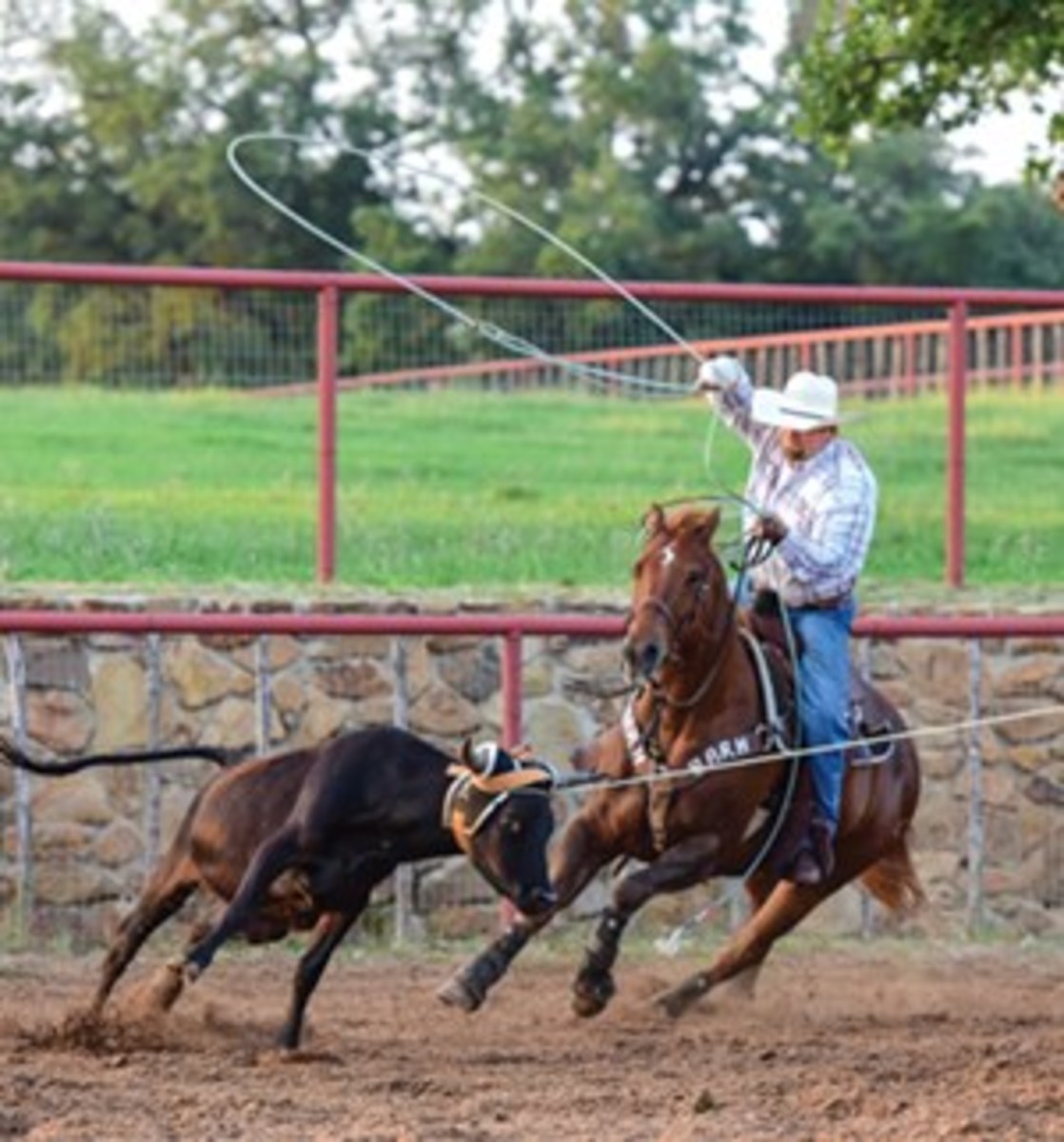
4. I’ve located my target and where the steer is going. I’ve got good position to the inside and this will be my final swing before my delivery. My swing is over the left leg at the peak of the steer’s jump. I can really see my target: both hocks and both feet. Right about now, I’m moving my focus from the entire strike zone to the “down and away” spot of the steer’s left foot. When people get too worried about placing their top strand on the hock, they don’t have enough speed when delivering to the target and it causes them to rope the right leg and not get their loop on the ground for their follow-through. For me, it’s made a lot easier by practicing on the dummy and on live cattle and it speeds my loop up and makes it go on a little quicker.
5. I’m just coming out of my delivery and grabbing my slack. My delivery went right on the steer’s feet. My loop hit the steer and I threw right directly through the steer’s legs and feet. Instead of my loop being a trap-style, hoping the steer steps in it, my loop goes on similarly to how a nice head loop goes on: from right toe to left toe. Instead of my loop being on the ground in front of his feet, it’s actually on the ground behind his feet. The follow-through of my tip naturally carried through and you can see the curl starting to develop which will lock the heel loop on. That’s the end goal: if you can deliver your loop and it goes straight on the feet. Which, to me, that is better than throwing it out there and hoping the steer steps in it.
